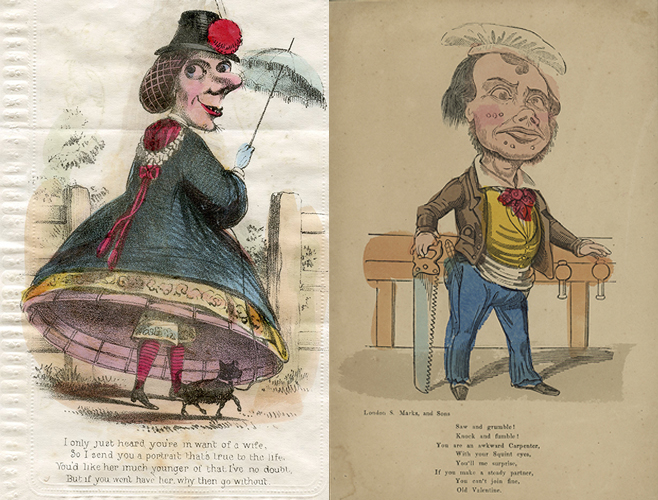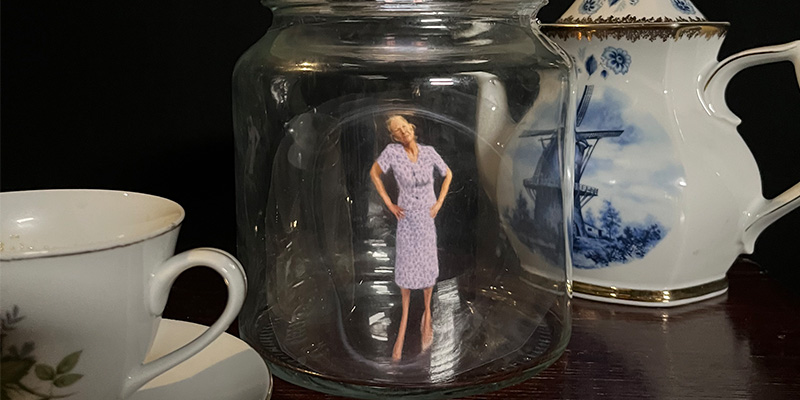News | Friday, 9th November 2018
#Armistice100: Moving war sacrifice of teaching college's staff and students
Cheshire County Training College became part of University's Cheshire campus

The sacrifice of students and staff from Cheshire County Training College - now part of Manchester Metropolitan University's Cheshire campus - during the First World War has been highlighted as part of the centenary commemorations of the Armistice.
The college opened as a teaching college in 1908, first in temporary buildings and from 1912 in a permanent home, and was eventually subsumed into the University, with some of the original buildings still being used today in Crewe.

Presentation on the college's war experiences
Margaret Roberts, a Researcher with the Sport and Leisure History Research Team, and Sarah Webb, academic librarian at the University, delivered a presentation at the Cheshire campus on the story of how the conflict affected students and the college.
They said: "As the British government started its recruitment drive – men who volunteered had be at least 18 years old to join the British Army - and 19 before they could be sent abroad to fight.
"The students were encouraged to finish their course before enlisting and Sarah and I have found no evidence of any students attempting to enlist before their time – teaching was a reserved occupation - but the fact that they were not 'doing their bit' was palpable to the students."
Extracts from documents consulted by Margaret and Sarah show sports fixtures were cancelled as opponents' players had enlisted or it was not viewed as proper to continue to enjoy the frivolity of sport as the country was put on a war footing.
Men needed for trenches
Margaret and Sarah said: "By 1915 the conflict had reached a much greater magnitude than was initially anticipated and an increasing number of men were needed for the trenches.
"For some of the students the lure of patriotism was enflamed by letters to the college from ex-students who had enlisted, telling of exciting exploits and journeys to far flung places.
"By late 1915 the Board of Education informed training colleges that students who wanted to join the forces should not be hindered in any way – and the campus was gradually depleted of most of its male contingent."
Out of the 21 men in the college's 1913-15 cohort, 19 enlisted.

First student to enlist
The first student to request permission to suspend his studies and join up was Evelyn Hadley Charles Millard.
Known as John, he signed up to Royal Naval Volunteers in July 1915 at the end of the first academic year.
Since the number of recruits outnumbered the number of crew positions on manned ships, the Admirality organised the excess men into Army-type units.
John eventually would serve in France undertaking land-based duties while wearing a British Army uniform emblazoned with Royal Navy ranks and badges.
After his initial training he attended a machine gun school and was invited back to teach and become a physical instructor, no doubt in part to his previous teacher training.
John saw action at the Battle of the Somme, bravely manning a machine gun post, and survived the war.
After the end of hostilities and his discharge from the Royal Navy he chose not to resume his teacher training and instead joined the Inland Revenue, becoming in 1924 the youngest tax inspector in the country.
But the war had taken its toll and he died just a decade later at the age of 37 from tuberculosis, thought to have been contracted during his service in France.

College's 'Home Front' effort
As the First World War developed, the number of students and old students serving in the Armed Forces steadily increased.
To support them a kind of college home front developed on campus:
under the inspiration of the principal’s wife [Mrs Delaney], the women students periodically met in the lodge to make up parcels of “comforts” for every serving member of the college. These were busy evenings, with tireless Mrs Delaney in charge, always ready with advice and assistance with tea and coffee for tired workers. This was only one of several ways in which the women students of the college strove to help the nation in its crisis
Some of the college's female students went flax-pulling in Dorset, others went fruit picking or undertook clerical work for the Food Control and in many other ways, college documentation reveals, "each woman student served as best she might".
They also traced serving ex-students and encouraged them to share their news with the readers of the students’ magazine.
First life lost
The very first student life to be lost was at the Battle of the Somme.
John Brocklehurst, of Middlewich, from the 1909 cohort, was a Serjeant in the 1st Manchester Pals Regiment and an Assistant Master at a county school.
He had been wounded in an earlier attack and after a visit to a dressing station returned to his men – eager to participate in the offensive they had been training for over the previous weeks.
It was later said of John “he was a leader to the end, a good soldier and a good man”.

Unveiling of memorial plaque
In the aftermath of the conflict, the editors of the 1919 students’ magazine wrote:
With the return of the men students from the army the College is once more resuming its normal appearance. We are all very pleased to see them back again, and hope that they will be as happy and successful in their college career as it is possible for them to be
The same year a special reunion ceremony was held at the college to remember the 14 students who had fallen, and a remembrance plaque was unveiled in the library.
Margaret and Sarah said: "When the new library was built in the 1960s, the War Memorial was carefully taken down and re-displayed in the main corridor of the Delaney building.
"Students and staff saw and see it on a daily basis and none of those who gave the ultimate sacrifice are forgotten."
Read more #Armistice100 stories and expert analysis from University academics




